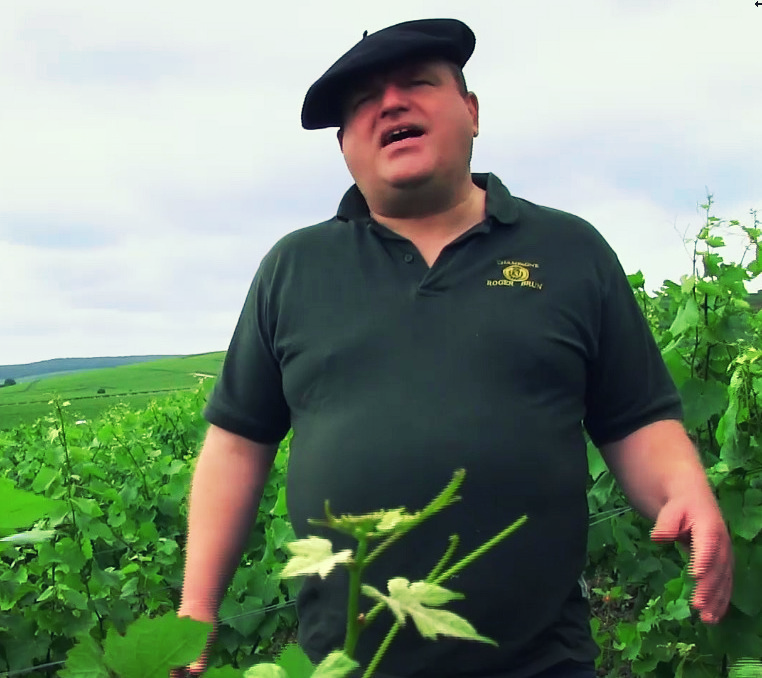To cork or to DIAM
“To cork or to DIAM, that is the question”
What I like about Jean-Pierre is that he is a very positive person. Even if you don’t know him personally and just google his name, you’ll find out he’s smiling and always in a good mood in the photos. I personally think, such an attitude is transferred to everything and everyone around him, and it’s one of the secrets why his champagnes are so good. I’ve already proved to myself that it takes a nice person to make a nice champagne.
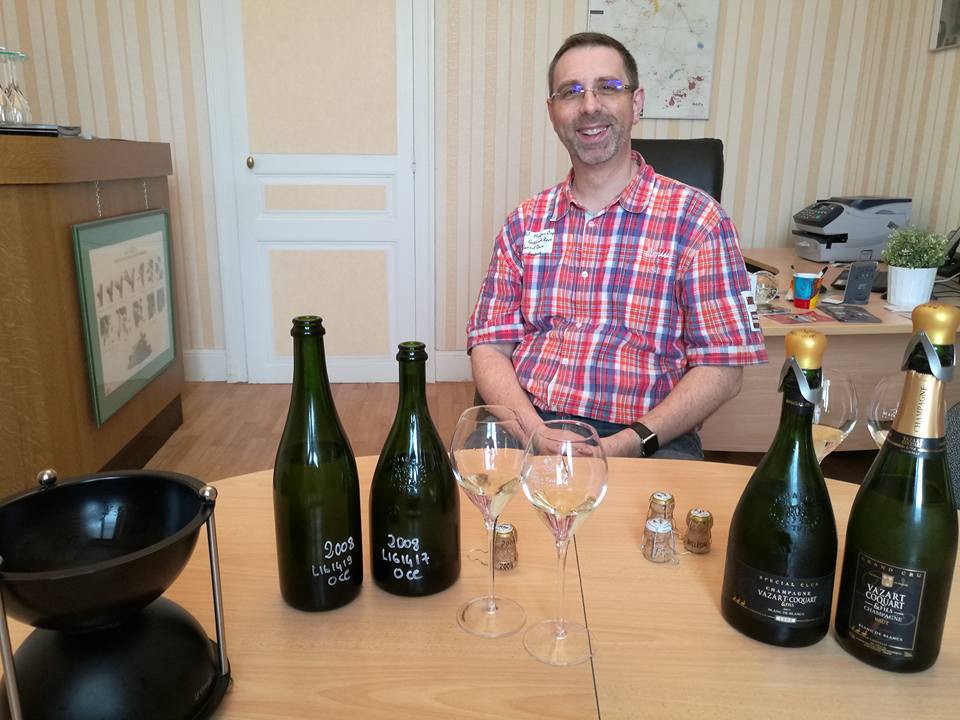
Jean-Pierre Vazart (Facebook page)
This particular story started when I was at “Le Printemps des Champagnes” in April, 2018 and was looking for gems at “Le Club Trésors de Champagne” as they do have interesting wines there.
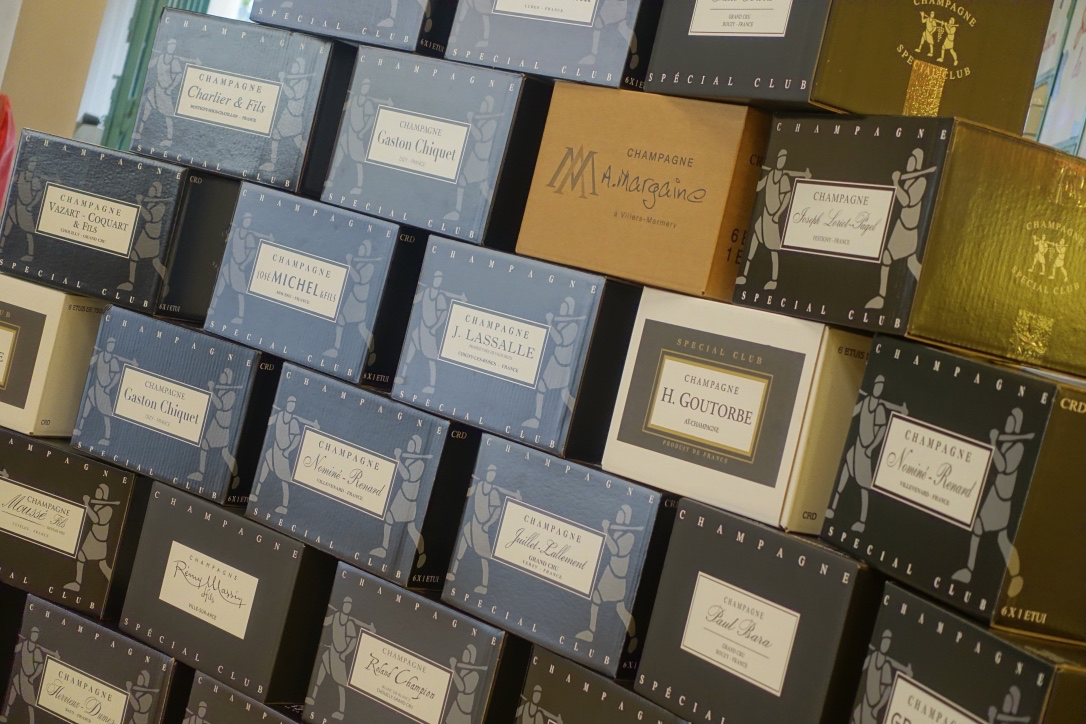
Le Club Trésors de Champagne, April 2018
So, I stopped by Jean-Pierre to say hi and taste his new wines when I saw a “Special Club” that I knew quite well and really liked. Two bottles next to each other, 2006 vintage, with “L” and “MD” letters. OK, whatever, but what’s the difference between them?
. . .
Jean-Pierre explained to me that it was absolutely the same champagne, 100% BdB from Chouily, bottled in 2007, disgorged in 2012 (so, 5 years on lees) and then received an ordinary natural cork + muselet to be presented about 6 years later. Obviously, both bottles were in a good shape, i.e. totally identical champagnes, except for one little thing.
Jean-Pierre explained to me that it was absolutely the same champagne, 100% BdB from Chouily, bottled in 2007, disgorged in 2012 (so, 5 years on lees) and then received an ordinary natural cork + muselet to be presented about 6 years later. Obviously, both bottles were in a good shape, i.e. totally identical champagnes, except for one little thing.
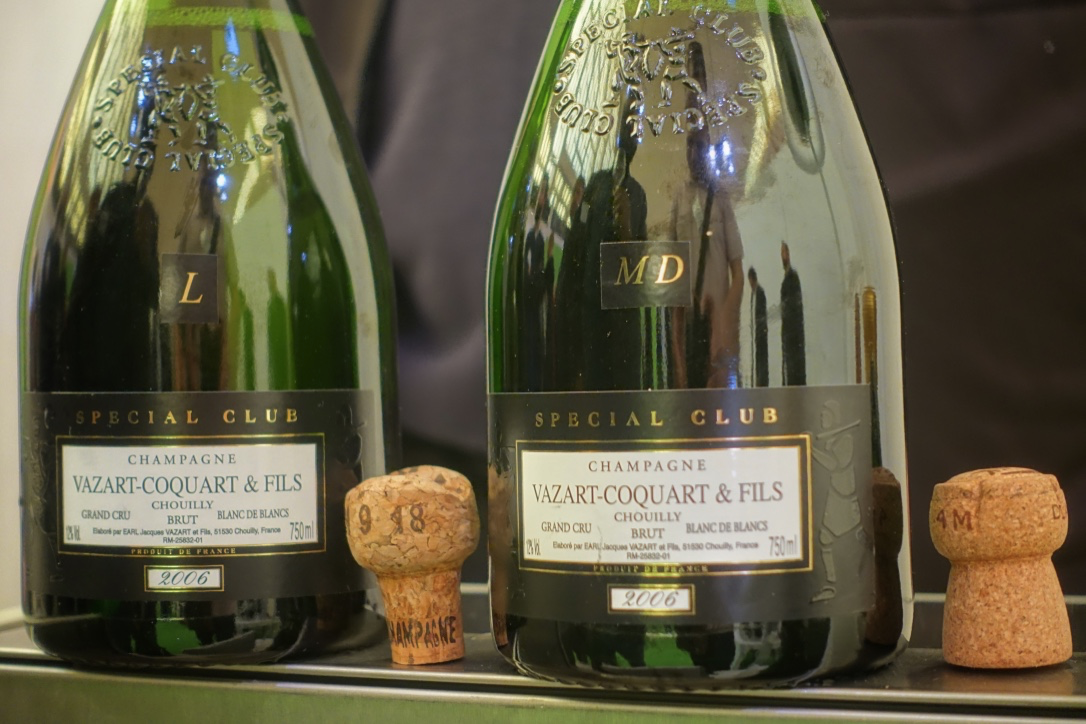
And this thing was that one bottle spent those 5 years on lees under a natural cork, while the other — under a Mytik Diam.
. . .
“Oh, come on, give me a break”, said a sceptical side of me. “I could understand the difference between aging under “capsule+bidule” vs. “regular cork”, but “regular cork” vs. “DIAM” that had beed tested so many times by so many labs and sommeliers — no way! I’ve read the articles and researches. Give me the both!” I’m an engineer after all, so I needed to do my own research!
So, I tasted the both champagnes first time. Hm, they were different, but it was probably my perception as I already knew the answer. I went and got a second glass to taste them head-to-head the second time. Yep, still different. “Come on… Just can’t be”.
I took a break, came back and asked for a re-fill. But to make sure I didn’t know the answer, both glasses were served blindly. I said that he could even joke on me and serve the same wine in both glasses. If I find the difference and it is the same wine indeed, I’d go and jump off the bridge…any bridge I find in Reims as my tasting buds are useless anyway. Well, as you can see, I’m still alive :) Three times in a row the “L” champagne was a winner to me.
Don’t get me wrong, both of them were great champagnes that I’d have enjoyed had I tasted them solo. But what makes the “L” champagne different… Imagine, you are at the concert when your favorite band just rocks. You liked it well. And after the playlist has been played, everyone is screaming “Encore!”, but they don’t come back. OK, you’ve got the pleasure you paid for, no complaints, but you still miss the perfection right at the end, and all of a sudden the concert looks a bit “dull”. Well, that’s the “MD”, while in case of the “L” the band came back and played a few songs making everyone even more excited.
Being still sceptic I decided to go further. As we have our tasting club in Belgium with the top of Belgian Vivino users (Bruno, Marc, Backeros, Steven, Lieven M and me — Yuri RWC) I asked Jean-Pierre to help me play a little trick at our next tasting which took place on June, 10th.
. . .
“Oh, come on, give me a break”, said a sceptical side of me. “I could understand the difference between aging under “capsule+bidule” vs. “regular cork”, but “regular cork” vs. “DIAM” that had beed tested so many times by so many labs and sommeliers — no way! I’ve read the articles and researches. Give me the both!” I’m an engineer after all, so I needed to do my own research!
So, I tasted the both champagnes first time. Hm, they were different, but it was probably my perception as I already knew the answer. I went and got a second glass to taste them head-to-head the second time. Yep, still different. “Come on… Just can’t be”.
I took a break, came back and asked for a re-fill. But to make sure I didn’t know the answer, both glasses were served blindly. I said that he could even joke on me and serve the same wine in both glasses. If I find the difference and it is the same wine indeed, I’d go and jump off the bridge…any bridge I find in Reims as my tasting buds are useless anyway. Well, as you can see, I’m still alive :) Three times in a row the “L” champagne was a winner to me.
Don’t get me wrong, both of them were great champagnes that I’d have enjoyed had I tasted them solo. But what makes the “L” champagne different… Imagine, you are at the concert when your favorite band just rocks. You liked it well. And after the playlist has been played, everyone is screaming “Encore!”, but they don’t come back. OK, you’ve got the pleasure you paid for, no complaints, but you still miss the perfection right at the end, and all of a sudden the concert looks a bit “dull”. Well, that’s the “MD”, while in case of the “L” the band came back and played a few songs making everyone even more excited.
Being still sceptic I decided to go further. As we have our tasting club in Belgium with the top of Belgian Vivino users (Bruno, Marc, Backeros, Steven, Lieven M and me — Yuri RWC) I asked Jean-Pierre to help me play a little trick at our next tasting which took place on June, 10th.
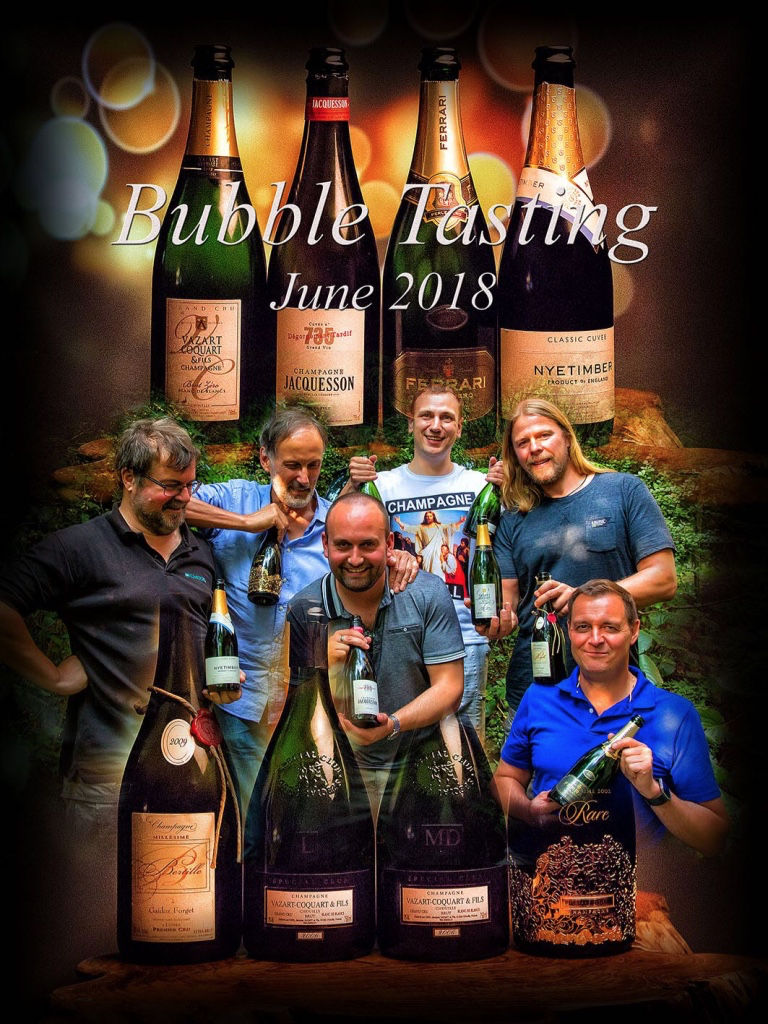
Belgian Vivino tasting club
I pretended I bought some “nice Special Club old vintage champagnes, made from similar grapes etc.” but I was having hard time trying to figure out which one is better (sorry, guys). Obviously, the two bottles were supposed to be served blind and even I didn’t know the answer as it was a third person making all the preparations and wrapping them in foil. Jean-Pierre was kind enough to provide me with the bottles from his stock and the party started.
So, six of us, non-professionals, but who had already tasted thousands of wines by that date, started looking for the differences. I opened both bottles about 40 minutes in advance and the quest began. I wasn’t pushing the guys as I already knew a half of the answer, so it’s their impressions I wrote, plus, mine, of course.
The champagnes were different indeed, there wasn’t even any doubt. And the more the wines evolved in the glass, the bigger the difference became.
So, six of us, non-professionals, but who had already tasted thousands of wines by that date, started looking for the differences. I opened both bottles about 40 minutes in advance and the quest began. I wasn’t pushing the guys as I already knew a half of the answer, so it’s their impressions I wrote, plus, mine, of course.
The champagnes were different indeed, there wasn’t even any doubt. And the more the wines evolved in the glass, the bigger the difference became.
Wine #1 was characterized as more evolved, but dull (remember the concert?), nuts, butter, a little bitterness, more oxidative style, less freshness left. Again, it was a good champagne, well-evolved, fresh, rich on the aroma and palate, it’s just…
Wine #2 was better and richer with honey, pecan nuts, yet, preserving the hints of tropical fruits (but not too sweet) and freshness on the finish. It gave more volume it was “brighter”. And it’s the joy and freshness that you value in the champagne in general.
Actually the final impression was kind of paradoxical: like we were drinking a younger champagne that was at the same time more evolved than the other one. We took our time before we finished the bottles. Pure pleasure! Needless to say, both bottles were in a perfect shape (no cork, no bad scent etc.)
My first thought was:”Well, it would be funny if #2 turns out to be “MD”, but no. Unless Jean-Pierre finally used his opportunity to play a joke on me and marked the bottles in a wrong way, it was the fourth time in a row that a natural cork won the game. And if I understood correctly, he had already tested it 3 times before and every time “Liège” was the winner.
My first thought was:”Well, it would be funny if #2 turns out to be “MD”, but no. Unless Jean-Pierre finally used his opportunity to play a joke on me and marked the bottles in a wrong way, it was the fourth time in a row that a natural cork won the game. And if I understood correctly, he had already tested it 3 times before and every time “Liège” was the winner.
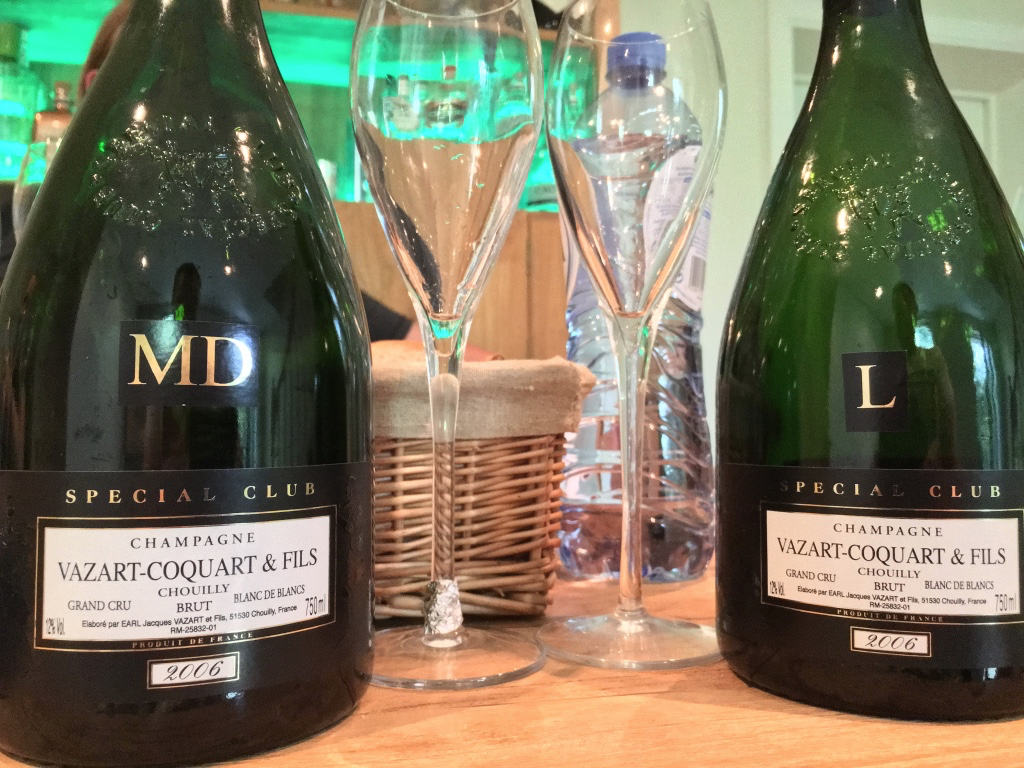
Wine 1 and 2 revealed
To me it was an unbelievable experience. Not only it showed the importance of “aging on lees” that many sparkling wine producers either ignore or don’t/can’t invest into as it costs money to store the wines for another year basically freezing assets instead of selling them. But it has also demonstrated, that even such a little thing as a cork you select can result in a totally different wine and affect your final product 12 years later.
Undoubtedly, it takes a good winemaker who knows how to make a wine conveying his terroir instead of mixing everything together and masking the flaws with maximum allowed dosage in order for such subtle detail to play the difference. So, I’d like to thank Jean-Pierre twice: first, for being such a good winemaker and his nice champagnes, and, second, for his help in this little experiment.
Undoubtedly, it takes a good winemaker who knows how to make a wine conveying his terroir instead of mixing everything together and masking the flaws with maximum allowed dosage in order for such subtle detail to play the difference. So, I’d like to thank Jean-Pierre twice: first, for being such a good winemaker and his nice champagnes, and, second, for his help in this little experiment.



